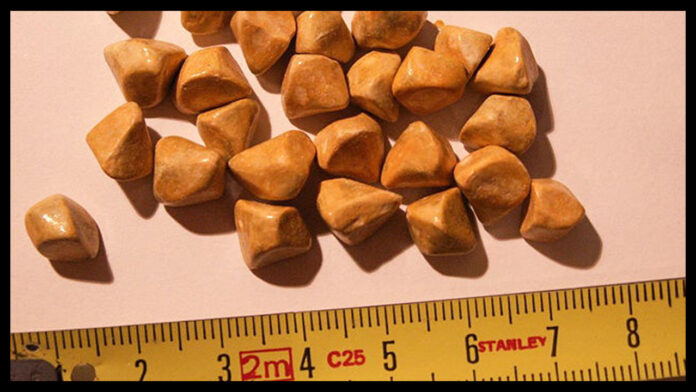Gallstones are small, hard pieces that form inside your gallbladder, an organ just below your liver. They can be as small as a grain of sand or as large as a golf ball. Gallstones can cause pain, but many people don’t even know they have them because they don’t always show symptoms.
In this article, we’ll explain what gallstones are, what causes them, how to know if you have them, and how to prevent them.
What Are Gallstones?
Your gallbladder is a small organ that stores bile, which helps digest fats from the food you eat. Gallstones form when there is an imbalance in the substances that make up bile, like cholesterol or bilirubin.
There are two main types of gallstones:
- Cholesterol Gallstone – These are made when there is too much cholesterol in the bile.
- Pigment Gallstone – These form when there’s too much bilirubin in the bile.
What Causes Gallstones?
Gallstones form when there’s too much of certain substances in your bile, or when the bile is not emptied properly from the gallbladder. Some common causes are:
1. Too Much Cholesterol
If your body makes more cholesterol than it can handle, the extra cholesterol may turn into Gallstone.
2. Too Much Bilirubin
Bilirubin is made when your body breaks down old red blood cells. If your liver makes too much bilirubin, it can lead to gallstones.
3. Being Overweight
Being overweight increases the amount of cholesterol in your bile, which can lead to Gallstone.
4. Age and Gender
Older people, especially women, are more likely to develop gallstones. Hormones like estrogen increase the risk.
How Do You Know if You Have Gallstones?
Many people with Gallstone don’t have any symptoms. This is called “silent” gallstones. But, if a Gallstone blocks a bile duct, it can cause pain and other problems. Here are some symptoms to watch for:
1. Pain in the Upper Belly
This pain usually happens in the upper-right side of your belly, especially after eating a big or fatty meal. It can last from a few minutes to several hours.
2. Nausea and Vomiting
Feeling sick or vomiting after eating can be a sign of Gallstone.
3. Jaundice
If your skin or the whites of your eyes turn yellow, this could mean a gallstone is blocking the bile ducts. This is called jaundice.
4. Fever and Chills
If you have a fever along with the other symptoms, it might mean there’s an infection in your gallbladder.
How Are Gallstones Diagnosed?
If you think you have gallstones, see a doctor. They may use an ultrasound (a special kind of imaging test) to look for Gallstone in your gallbladder. Other tests may include blood tests or a CT scan.
How Are Gallstones Treated?
Not everyone with Gallstone needs treatment. If they don’t cause any problems, you may just need to keep an eye on them. But if you have symptoms, here are some treatment options:
1. Surgery: Gallbladder Removal
The most common treatment for Gallstone is surgery to remove the gallbladder. This is called a cholecystectomy. After the gallbladder is removed, your liver still produces bile, and it flows directly into the small intestine.
2. Medications
In some cases, doctors can prescribe medication to help dissolve small Gallstone, but this doesn’t always work and can take a long time.
3. Endoscopic Procedure
If a gallstone blocks the bile duct, doctors might use a special tube to remove the stone without surgery.
Can Gallstones Be Prevented?
While you can’t always prevent Gallstone, you can reduce your risk with these simple lifestyle changes:
1. Maintain a Healthy Weight
Being overweight increases your chances of developing gallstones. Eating a balanced diet and exercising regularly can help you maintain a healthy weight.
2. Eat a Healthy Diet
Eat plenty of fruits, vegetables, and whole grains. Avoid foods high in unhealthy fats, like fried foods, fatty meats, and processed snacks.
3. Lose Weight Gradually
Losing weight too quickly can increase the risk of Gallstone. If you want to lose weight, aim to do it slowly—about 1 to 2 pounds per week.
4. Exercise Regularly
Aim for at least 30 minutes of moderate exercise most days of the week to help keep your gallbladder healthy.
Keeping Your Gallbladder Healthy
Gallstones are a common condition, but many people live with them without even knowing it. If you have symptoms like pain, nausea, or jaundice, see a doctor for treatment. To reduce your risk of developing Gallstone, eat a healthy diet, stay active, and maintain a healthy weight. By taking care of your health, you can reduce your chances of having Gallstone and keep your gallbladder in good shape.
Disclaimer: We do not guarantee that the information of this page is 100% accurate and up to date.

